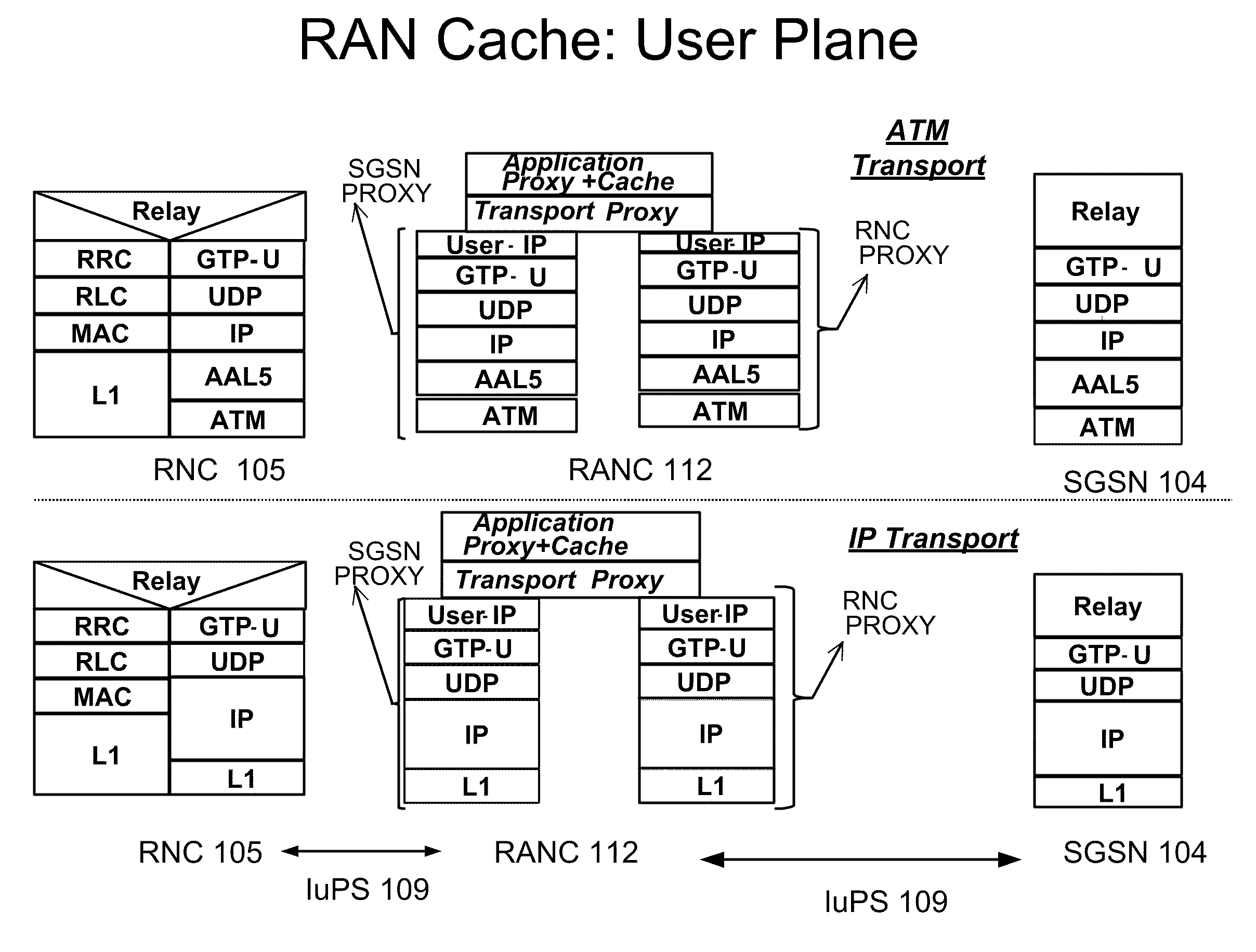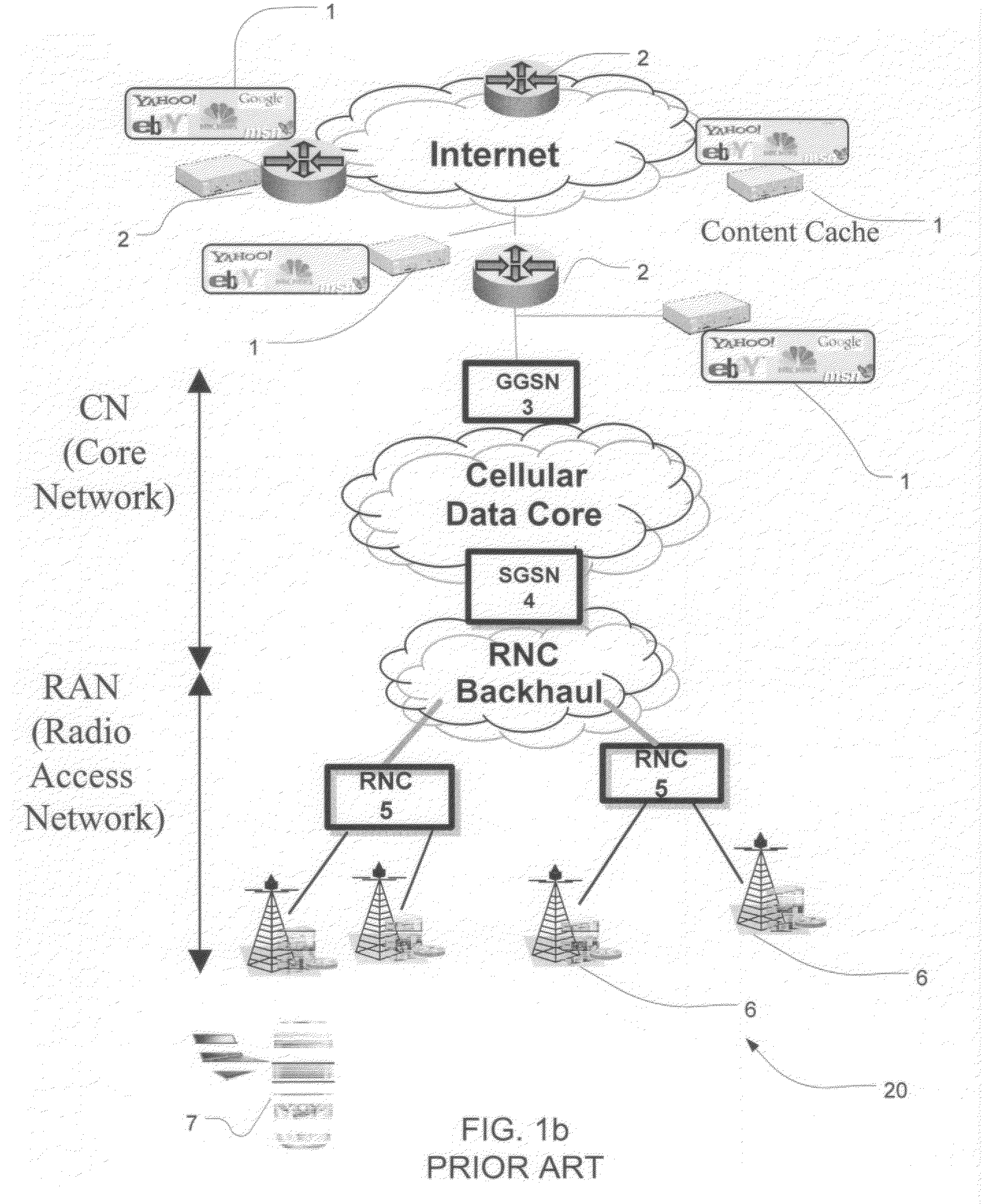Content Caching in the Radio Access Network (RAN)
a radio access network and content caching technology, applied in the field of content caching in the radio access network, can solve the problems of insufficient replication or mirroring of some sites at different geographical locations to meet the exponential growth of data traffic, certain limitations, etc., to facilitate caching and content delivery optimization, improve user experience, and reduce back-haul bandwidth
- Summary
- Abstract
- Description
- Claims
- Application Information
AI Technical Summary
Benefits of technology
Problems solved by technology
Method used
Image
Examples
Embodiment Construction
[0032]FIG. 2 shows a traditional 3G / UMTS network, including an UE (user equipment) 107, NodeB (or base transceiver station) 106, RNC (radio network controller or base station controller) 105, SGSN (Serving GPRS support node) 104, and a GGSN (gateway GPRS Support node) 103. Also shown in FIG. 2 is the protocol used to communicate between these various devices. For example, IuB 108 is the protocol used between Node B 106 and the RNC 105. Similarly, IuPS is the protocol used between the RNC 105 and the SGSN 104. Gn 110 is used between the SGSN 104 and the GGSN 103. Finally, Gi 111 is the IP based interface between the GGSN 103 and the internet.
[0033]FIGS. 3 through 5 each illustrate a possible interception point where the RAN Cache (RANC) device may be inserted in a 3G / UMTS network. In FIG. 3, the RANC 112 is located between the Node B 106 and the RNC 105. In FIG. 4, the RANC 112 is located between the RNC 105 and the SGSN 104. In FIG. 5, the RANC 112 is located between the SGSN 104 an...
PUM
 Login to View More
Login to View More Abstract
Description
Claims
Application Information
 Login to View More
Login to View More - R&D
- Intellectual Property
- Life Sciences
- Materials
- Tech Scout
- Unparalleled Data Quality
- Higher Quality Content
- 60% Fewer Hallucinations
Browse by: Latest US Patents, China's latest patents, Technical Efficacy Thesaurus, Application Domain, Technology Topic, Popular Technical Reports.
© 2025 PatSnap. All rights reserved.Legal|Privacy policy|Modern Slavery Act Transparency Statement|Sitemap|About US| Contact US: help@patsnap.com



